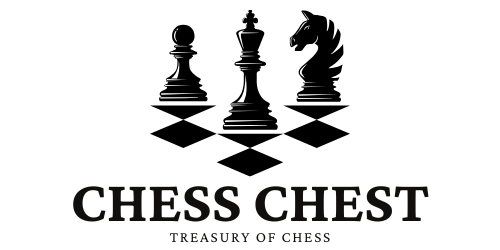Chess has long been celebrated as a game that enhances critical thinking, patience, and problem-solving. With the advent of interactive chess lessons, schools now have the opportunity to introduce chess in a way that engages students directly through hands-on, technology-driven learning. Interactive chess lessons—whether through apps, online platforms, or digital whiteboards—offer an accessible and stimulating classroom tool. In this article, we’ll explore how interactive chess lessons can benefit students and why they may be the next big thing in education.
1. Building Critical Thinking and Problem-Solving Skills
Interactive chess lessons emphasize critical thinking and problem-solving, allowing students to work through complex scenarios in a structured and engaging way. These skills are essential for academic success and can be applied across various subjects.
- How It Works: Interactive lessons typically break down chess moves, tactics, and strategies into bite-sized exercises. Students work through puzzles, anticipate their opponent’s responses, and analyze potential moves, all of which require focus and logical thinking.
- Benefits: By building these cognitive skills, students become better equipped to tackle academic challenges. The practice of anticipating outcomes and analyzing options also strengthens decision-making skills and adaptability.
2. Enhancing Focus and Patience in a Digital Age
In an age where distractions are plentiful, chess teaches students the value of concentration and patience. Interactive lessons can guide students through exercises that require careful thought and sustained attention, helping them improve focus in a rewarding and enjoyable way.
- How It Works: Chess lessons and puzzles require students to slow down, think deeply, and commit to a plan of action. Many interactive platforms, like ChessKid or Chess.com, encourage students to work through challenges at their own pace, promoting a patient approach to learning.
- Benefits: Developing patience and focus in the context of an engaging activity like chess helps students build these skills in a way that feels less like a task and more like play, making it easier to transfer these qualities to other areas of learning.
3. Improving Memory and Recall Through Practice
Interactive chess lessons involve repeated practice, which strengthens students’ memory and recall abilities. The process of learning openings, recognizing patterns, and recalling past games contributes to cognitive development and helps students retain information effectively.
- How It Works: Many chess platforms use spaced repetition and interactive puzzles to help students memorize key concepts, tactics, and moves. Lessons can be replayed and repeated, allowing students to reinforce memory over time.
- Benefits: Memory and recall are essential for learning new information across subjects. By strengthening these skills through interactive chess lessons, students can enhance their ability to remember facts, concepts, and sequences in other areas of study.
4. Teaching Resilience and Growth Mindset Through Challenge
Chess presents students with both successes and setbacks, teaching resilience in the face of challenges. Interactive lessons offer a structured environment where students can practice, make mistakes, and learn from them, promoting a growth mindset.
- How It Works: Interactive platforms provide feedback on mistakes, guiding students toward better moves without penalizing them harshly. When students see their progress over time, they become motivated to keep improving.
- Benefits: Learning that mistakes are part of the process and that improvement comes through effort helps students develop a growth mindset. This mindset encourages them to embrace challenges, take constructive feedback, and persevere in the face of difficulty.
5. Engaging Different Learning Styles with Interactive Tools
Interactive chess lessons can cater to a variety of learning styles, making it easier to engage all types of students. Visual learners, kinesthetic learners, and those who prefer interactive activities all benefit from the versatile format of digital chess lessons.
- How It Works: Chess software includes features like visualizations of piece movement, clickable exercises, and animated tutorials that appeal to students who learn best through hands-on or visual experiences. Many programs also offer audio commentary for auditory learners.
- Benefits: By engaging multiple senses, interactive chess lessons appeal to diverse learning preferences, making it easier for students to grasp complex concepts and enjoy the learning process.
6. Fostering Social Interaction and Teamwork in the Classroom
Interactive chess lessons can also be used as collaborative tools, promoting teamwork and peer interaction. Chess fosters communication skills and teaches students to respect different strategies and ideas, contributing to a positive classroom environment.
- How It Works: Teachers can use chess software for paired or group activities, where students work together to solve puzzles or analyze games. Many platforms allow students to discuss moves, exchange ideas, and strategize together.
- Benefits: Collaborative chess activities strengthen communication, encourage respectful debate, and build camaraderie among students. This social interaction adds a valuable dimension to learning that can enhance students’ overall classroom experience.
7. Making Chess Accessible Through Technology
Chess software platforms make the game more accessible, allowing students to learn chess regardless of prior experience or access to physical boards. With technology, teachers can introduce chess to a wide range of students in an easy-to-use, engaging format.
- Recommended Platforms:
- ChessKid: Designed for children, with tutorials, puzzles, and a safe environment for learning and play.
- Lichess: A free, open-source platform with robust educational tools and puzzle practice for students of all levels.
- Chess.com: A comprehensive platform with guided lessons, game analysis, and resources for teachers.
- Benefits: Using accessible, user-friendly technology lowers barriers to learning chess and gives students of all backgrounds and skill levels the chance to enjoy and benefit from the game.
Summary
Interactive chess lessons offer an innovative, effective classroom tool for building cognitive skills, promoting a growth mindset, and enhancing social interaction. With platforms like ChessKid, Lichess, and Chess.com, teachers can integrate chess into the curriculum in a way that supports diverse learning styles and provides students with lifelong skills. As schools increasingly embrace digital learning, interactive chess lessons stand out as a valuable resource for educating the whole student, from critical thinking to resilience. By bringing chess into the classroom, educators can enrich students’ learning journeys, making education both engaging and transformative.




